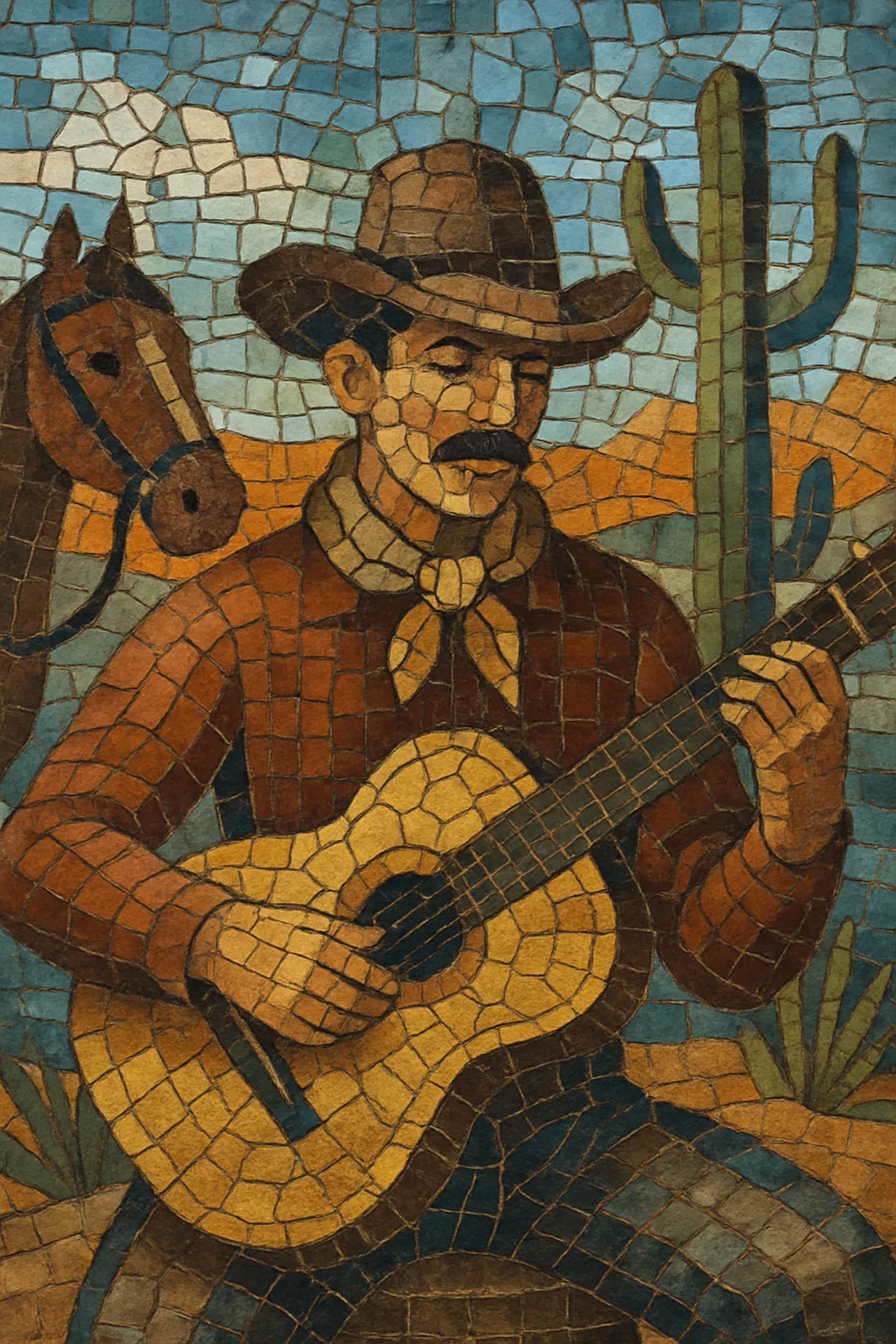
Cowboy poetry is a narrative, often humorous or reflective spoken-verse tradition that grew out of the daily lives of working cowboys in the American West.
Typically recited from memory rather than read, it uses plainspoken language, steady meters, and end-rhymes to tell stories about cattle drives, horses, weather, humor on the trail, ranch work, land stewardship, and the changing West. While sometimes accompanied by guitar or fiddle, it is primarily a performance of voice, pacing, and imagery, designed for campfires, bunkhouses, and community gatherings.
Stylistically, cowboy poetry draws heavily on Anglo‑American ballad forms and frontier oral storytelling, favoring quatrains (often ABCB), anapestic and iambic rhythms, and vivid, concrete description. Its tone ranges from wry and tall‑tale comedic to elegiac and spiritual, carrying forward the ethic, camaraderie, and grit of ranch life.
Cowboy poetry emerged in the 1880s during the era of long cattle drives and open‑range ranching in the United States. Cowboys composed and recited verses to pass time on the trail, commemorate events, and entertain one another at camp. The form borrowed meters, stanzas, and narrative habits from Anglo‑American and Celtic balladry and other frontier folk verse, but localized its imagery to horses, cattle, weather, and the ethics of work and companionship.
As the frontier closed, collectors and poets brought the tradition to print. John A. Lomax’s collections (beginning in 1910) preserved cowboy songs and verse, while poets such as Badger Clark (Sun and Saddle Leather, 1915), Bruce Kiskaddon, S. Omar Barker, and Henry Herbert Knibbs shaped a recognizable literary style for the genre. Recitation remained central, but magazines, chapbooks, and ranch papers helped standardize forms and widen audiences.
Mid‑century popular culture often romanticized the cowboy in film and music, and the poetry persisted in ranching communities even as industrialization and changing land use transformed the West. In 1985, the Western Folklife Center launched the National Cowboy Poetry Gathering in Elko, Nevada, catalyzing a revival. Performers like Waddie Mitchell and Baxter Black helped reconnect national audiences to the living, working roots of the form.
Cowboy poetry today thrives at regional festivals, ranch brandings, and community events throughout the American West and beyond. New voices—including women poets and Indigenous and Hispanic ranching communities—expand themes and perspectives. While the form remains rooted in traditional meters and rhyme, contemporary pieces address land management, ecology, technology, and cultural continuity, keeping the genre vital and relevant.
Pick a concrete moment from ranch life—doctoring a calf, a lightning storm on the range, a stubborn horse, a neighbor’s tall tale. Decide on a speaking persona (first‑person is common) and aim for clarity, authenticity, and specific detail.
Use quatrains with common ballad rhyme (ABCB or AABB). Favor iambic or anapestic lines (e.g., 8–6–8–6 syllables) that feel natural to speak and easy to memorize. Read aloud as you write; the cadence should carry, like the rhythm of a walk or horse’s lope.
Use concrete nouns and active verbs tied to ranch work (tack, cinch, windmill, boggy draw). Mix humor and pathos; punchlines, turns, and surprise end rhymes are common. Employ alliteration, internal rhyme, and assonance to add musicality without forcing the meter.
Open with a vivid scene, escalate with an obstacle or twist, and end with a moral, joke, or reflective image. Keep stanzas tight; each should move the story along. Avoid ornament for ornament’s sake—plain speech and true observation are prized.
Memorize the poem and rehearse pacing. Use a relaxed, conversational delivery; let pauses land after punchlines or images. Optional light accompaniment (guitar, fiddle, harmonica) can set mood, but the voice should lead. Tailor delivery to the room—campfire intimacy differs from a festival stage.
Work ethic, partnership with animals, weather’s power, community bonds, land stewardship, generational change, and the tension between mythic West and working West.

